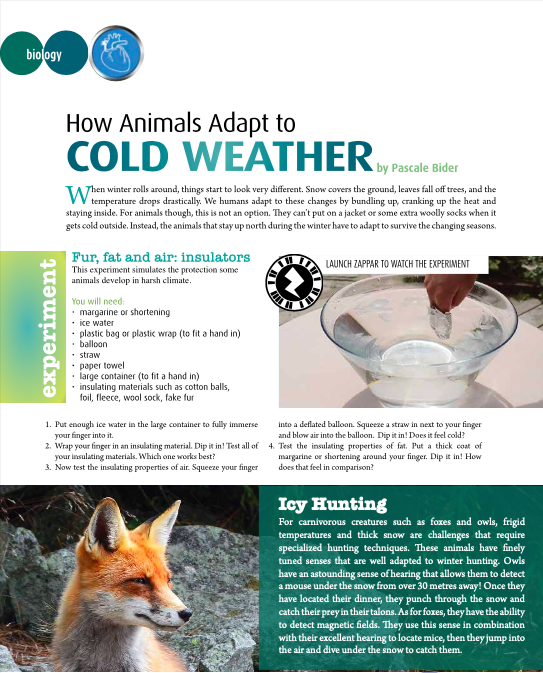Animal adaptation to climate science experiment video
Climate and Animal Adaptation
Animal adaption to climate is different depending on many factors including anatomical insulation and habitat. From deep sleepers to tunnellers and hunters, animals adapt uniquely to their needs for survival during icy and cold seasons.
Do humans adapt?
Absolutely. Imagine heading outdoors in shorts and sandals in a snowstorm? Human adaptation to changing climate happens when we wear layers of warm clothing, crave foods with higher fat content, and spend more time curled up indoors. We even experience an increased need for sleep which is logical since most other mammals hibernate.
Why don’t humans hibernate?
As appealing as that may sound, humans have a deep fundamental need for music, socialization, food, clothing, and shelter. Our needs make isolation difficult for us. So we adapt by either embracing the cold weather through sports that inspire us to enjoy the ice and snow. And for some, maybe an escape to a warmer, tropical climate.
About Climate Animal Adaptation
When we think of animals in the winter, the most popular image is of a big bear curled up in a deep slumber in a cozy cave. But there are numerous ways that animals adapt to climate beyond nodding off into a deep sleep. Over time, physical changes happen in the coat of some animals, while others prepare with natural materials to insulate a habitat; similar to how people prevent drafts from windows and doors. It’s fascinating that animals understand what lies ahead and that they have the instinct to prepare accordingly. After all, survival depends on it and that’s a big incentive.
Read the Story
Enjoy this non-fiction article from our Fall 2021 issue of Brainspace magazine below with your child to find surprising facts on cold climate survival.
For more excellent non-fiction stories that are appropriate for kids 8 to 14, click here to subscribe to Brainspace magazine.


